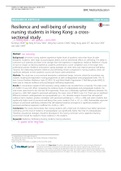Class notes
Wetenschappelijke onderbouwing 2 - notities alle leesclubs
- Course
- Institution
Wetenschappelijke onderbouwing 2 - notities van alle leesclubs gegeven door mevr Van Gils. Houd er rekening mee dat dit mijn persoonlijke notities zijn.
[Show more]



